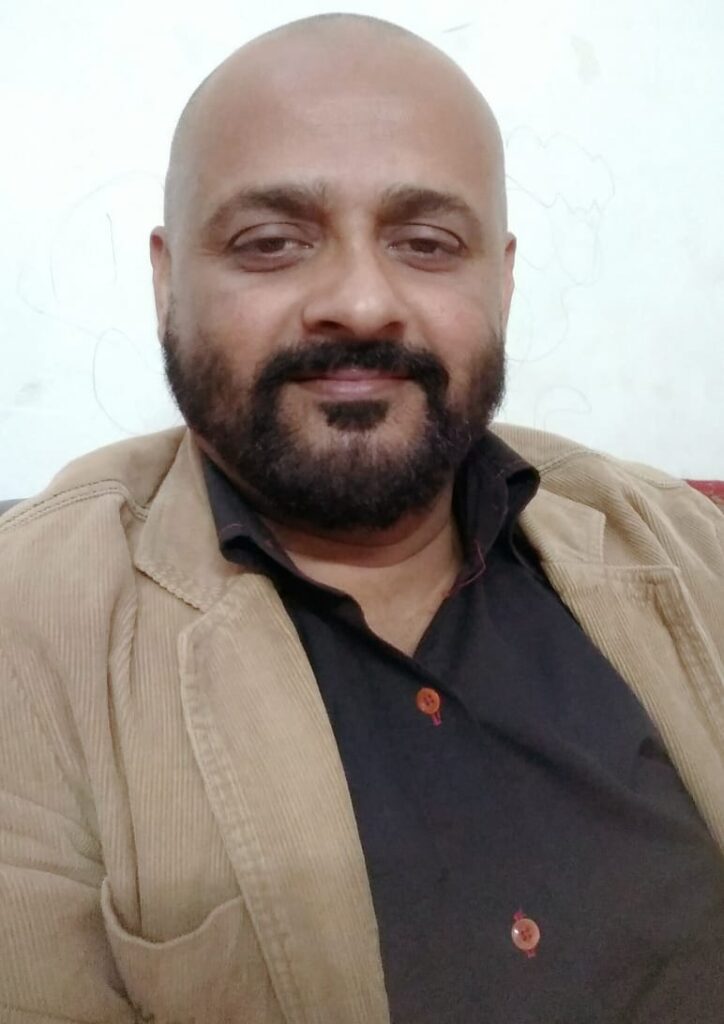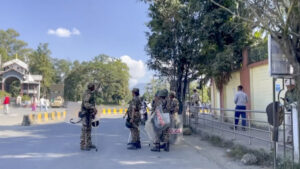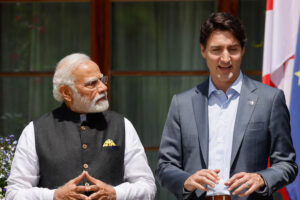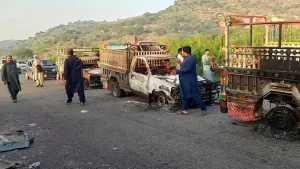Bengal’s ‘Poriborton’: From Vaam to Ram

By Ramakant Chaudhary
New Delhi 01 April:The battle of Bengal is going on with all guns blazing. The political catchphrases and slogans are punching to swing voters’ minds as the West Bengal’s second phase of elections being concluded on Thursday (April 1) with around 80 percent voter turnout. Once citadel of communist party plastered with Left’s “red” is being engulfed by BJP’s saffron waves that apparently seems to be entering into the Trinamool’s fort. From Jai Sri Ram to Duryodhana and from choppers to wheelchairs, the poll landscape of West Bengal is churned up with stormy political “Khela Hobe” which has carried away genuine issues of Bengal and Bengalis into the Bay of Bengal. Bengal has never ever witnessed such political rhetoric and polarization that has diluted electoral ideology in the democratic establishment. The political slugfest, an essence of democracy, has been hammered into bitterness and personal barbs. Notably, there has become ‘Poriborton’ in the Bengal’s political whirlwind shifting from Vaam (Left) to Ram (Right) but lo and behold Bhadralok’s Sonar Bengla is still conspicuous by its absence.
West Bengal, a politically sensitive state, used to witness intense and violent poll contests between Communist Party of India-Marxist (CPM), Congress and Trinamool Congress (TMC), but now it is seeing the same intensified fight between Mamata Banerjee’s outfit and the BJP juggernaut. Claims and counter-claims fly thick and fast. For the BJP winning the battle of Bengal is paramount as it could potentially establish the saffron party pan-India presence, impacting the entire region’s geopolitical and geostrategic dynamics. Winning Bengal could allow BJP to implement its ideological and political agenda that will consolidate its footprints in eastern states of India helping the saffron party reap political dividend during the Lok Saba elections in 2024. On the other hand, Mamata Banerjee desperately needs to win for keeping Trinamool alive as well as making her image bigger on the horizon of opposition’s national politics.
In the high octane poll battlefield, temple tourism has become a new phenomenon in the Bengal elections. Netas across political spectrum boasting of red Tilak are offering prayers at shrines and Hindu temples. Competitive politics has underlined the significance of Jai Shri Ram and Bharat Mata Ki Jai slogans. Appeasement politics has hit political nerves to recite Sholaks and Mantras at rallies. According to media report, the contenders of high-voltage Nandigram seat— Mamata Banerjee and Suvendu Adhikari— have visited at least 25 temples in the area. Nandigram – the constituency that helped Ms Banerjee storm the state’s Left citadel and catapulted her to power a decade ago – has become toughest political exercise for her.
Also, the politics of defections has heated Bengal poll cauldron while Bengal remains insulated from political turncoats till the Left regime. Banerjee and Adhikari, who was instrumental in swinging Nandigram votes for the Trinamool in 2011, have exchanged war of words since he switched allegiance to the BJP in December last year, triggering exodus of Trinamool leaders to the saffron party making Didi furious.
Bengal’s political matrix has undergone changes from Left’s class-politics to polarization of voters on caste and creed lines. Almost all political parties have been playing blame-game accusing of polarizing the voters ahead of the elections. BJP has blamed TMC of favouring the minorities for political gains while Mamata’s outfit has accused the saffron brigades of creating a rift within the Muslims and the Hindus to garner the vote of the majority community.
While the see-saw of insider and outsider game has been going on with PM Narendra Modi and other BJP leaders promising to restore the Bengali pride, Banerjee has been hitting out at the Modi-Shah duo with the ‘outsider’ tag, making the the West Bengal assembly elections a bipolar contest between the TMC and BJP.
Bengal is famed for its cultured contour, connoisseurs of art and sweetness of Bhadralok. But the soil of Rabindranath Tagore and Swami Vivekananda has witnessed an inextricable link between politics and violence since the independence. The public memory of bloodbath in the 1972 state assembly elections and NCBR Report tagging Bengal with highest political murder cases vividly remind us Mow Zedong’s famous saying: “Power grows out of the barrel of a gun.” The state has history of resorting political aggression against apparatchiks of rival parties.
The Left regime that assumed power in 1977 dismantling Congress’s authoritarian rule promised to sickle politics of vindictiveness from Bengal but Communist cadres continued with violence over the years.
As an opposition Trinamool’s violent resistance against the land acquisition program of Left Fronts at Singur and Nandigram catapulted Mamata Banerjee into the Writers Building in 2011. Being crowned with power, the “Daughter of Bengal” promised “Poriborton” making Bengal free from vindictive and violent politics. But scores of physical attacks and political murder cases hit headlines in the Mamata regime also.
Amidst the gung-ho of Khela Hobe, the spirit of ‘Vikas Hobe Bengal’ is overtly missing. Unemployment, poverty, lack of infrastructure development, poor healthcare, corruption, unimpressive economic growth now contradict Bengal pride before Independence. West Bengal has been turfed out of the club of better performing Indian states.
The Bengal famine, effect of Bengal partition, food crisis, Naxal movements……all these plagued booming Bengal. Leaders across party lines have been insensitive towards the tragedy of Bengal politics. They only believed writing their own destiny for grabbing Writers Building. Can this time Writers Building bring Sonar Bengala for Bhadralok, only time will say.
The first phase of the 294-member West Bengal Assembly elections concluded with an estimated 79.79 per cent voter turnout on the last Saturday while second phase voter turnout being pegged at 80 percent on Thursday. The polling for 31 seats in the third phase will be held on April 6. The elections for 44 seats will be orchestrated in the fourth phase on April 10. Further, in the fifth phase on April 17, 45 seats will go to polls. The sixth phase is scheduled for April 22 when elections for 43 seats will be done. In the seventh phase on April 26, polling will be held for 36 seats. Finally, the eighth phase is scheduled for April 29 when 35 seats will go for polling.
(The writer is Journalist and Political Commentator)






